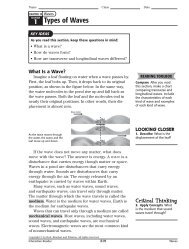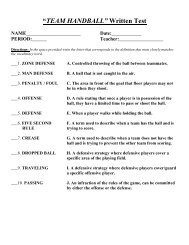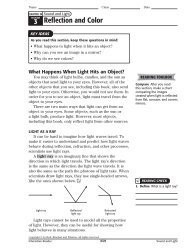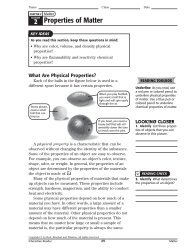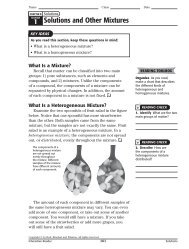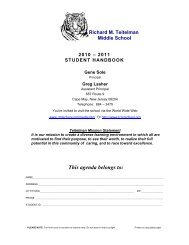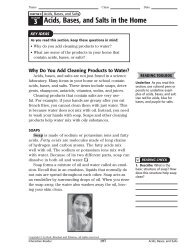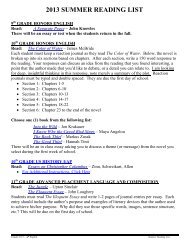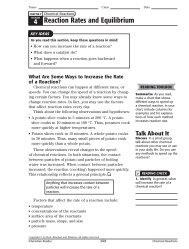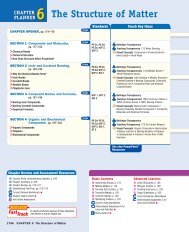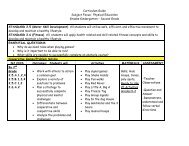4 Behavior of Gases
4 Behavior of Gases
4 Behavior of Gases
You also want an ePaper? Increase the reach of your titles
YUMPU automatically turns print PDFs into web optimized ePapers that Google loves.
Name Class DateSECTION 4<strong>Behavior</strong> <strong>of</strong> <strong>Gases</strong> continuedWhat Are the Gas Laws?<strong>Gases</strong> behave differently than solids or liquids do. Forexample, the volume <strong>of</strong> a gas can change due to pressure,but the volume <strong>of</strong> a solid or liquid generally cannot. Thegas laws describe how variables such as pressure, volume,and temperature affect the behavior <strong>of</strong> gases. Thegas laws will help you understand and predict the behavior<strong>of</strong> gases in specific situations.READING CHECK2. Identify Boyle’s lawdescribes the relationshipbetween which two variables?PRESSURE AND VOLUMEA diver is swimming at a depth <strong>of</strong> 10 m below sealevel. An air bubble escapes from her mouthpiece. Asthe bubble rises to the surface, it gets bigger. When thebubble reaches the water’s surface, its volume is doubleits original size.This example shows the relationship between the volumeand pressure <strong>of</strong> a gas, also known as Boyle’s law.Boyle’s law is true for almost any gas, if temperatureand amount <strong>of</strong> gas are constant, or unchanged.Boyle’s LawFor a certain amount <strong>of</strong> gas at a constant temperature, thevolume <strong>of</strong> a gas decreases as the gas’s pressure increases.Likewise, the volume <strong>of</strong> a gas increases as the gas’s pressuredecreases.In mathematical terms:Boyle’s Law(initial pressure)(initial volume) = (final pressure)(final volume)P 1V 1= P 2V 2The figure below illustrates Boyle’s law. Both pistonscontain the same amount <strong>of</strong> gas at the same temperature.3. Identify What happens tovolume as pressuredecreases?If you lift the piston, pressuredecreases. The gas particlesspread farther apart, and thevolume increases.If you push the piston, pressureincreases. The gas particles arepushed closer together, and thevolume decreases.Copyright © by Holt, Rinehart and Winston. All rights reserved.Interactive Reader 62 States <strong>of</strong> Matter



